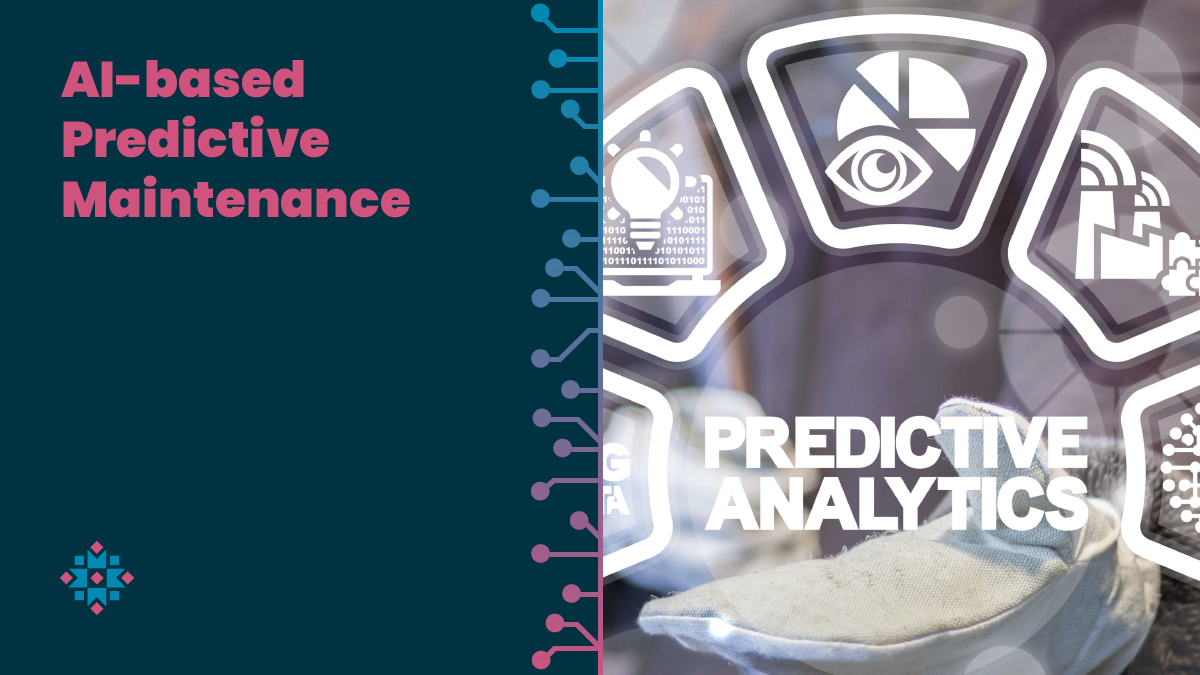Artificial Intelligence offers a wide range of applications in business, from workflow management to trend forecasting. However, when it comes to the manufacturing industry, there is one concept that stands out – Predictive Maintenance. Through it businesses are able to use their data not only for reporting the past but also to predict the future.
What is Predictive Maintenance?
Predictive maintenance is a term used in AI and machine learning to describe the capacity to use large amounts of data to forecast and point out possible issues. Sensors detect errors before they lead to failures in operation processes or systems. Having robust predictive maintenance technologies in place, allows organizations to foresee when and where possible service breakdowns may occur. Hence, they can react accordingly and quickly to avoid service interruptions.
What are the benefits of adopting Predictive Maintenance?
The implementation of Predictive Maintenance can be done in accordance with the company’s needs and preferences. They can vary from complex data gathering and model building to simple computations. Either way, predictive maintenance tools are used by companies to maintain critical assets to work efficiently and effectively. Therefore, the following goals are reached:
- Revenues increase as productivity increases and costs for new materials decrease.
- Operational expenses decrease and the risk of unplanned failures reduces.
- Equipment life cycle is extended and improved.
- Repetitive rework is minimized, possible defects decrease, and quality increases.
- Safety and energy efficiency increase.
- Keeping supply chains intact.
How does it work?
The process begins with the analysis of the business case – what the pain point in terms of costs is and how AI would improve it. Then, Machine Learning (ML) is infrastructured in data research and data collection. The following stage is to train the ML to recognize areas of errors and how to address them. The desired outcomes are for predictive maintenance to provide coherent and accurate information.
To illustrate the whole process by breaking it into seven more detailed stages, the timetable would be as follows:
- Understand the need – consider the costs, wastes, and inefficiency; then, identify the optimal case for the business.
- Extract data – allow the technology to have access to the data collectors and storage.
- Explore, analyze and delete data – use only relevant and understandable data.
- Enrich data – manipulate the data so that the sensors could address it as one unit rather than separated parts.
- Predict – use all the collected data and sources to create a predictive model.
- Get visualized – the feedback is received as a product from the model which helps managers to react accordingly.
- Execute – start using the model in real-time cases.
Conclusion
The most immediate benefits from implementing Predictive Maintenance are both cost reduction and an increase in quality. By adopting a more sophisticated and larger Predictive Maintenance strategy, however, the lifetime of high-valued assets could be expanded to provide additional income rather than simply being a cost.
The AI tools are no longer a thing of the future – they are the present and more and more businesses are finding their usage favorable for their success.
Contact us if you want to implement Artificial Intelligence solutions in your manufacturing business!


